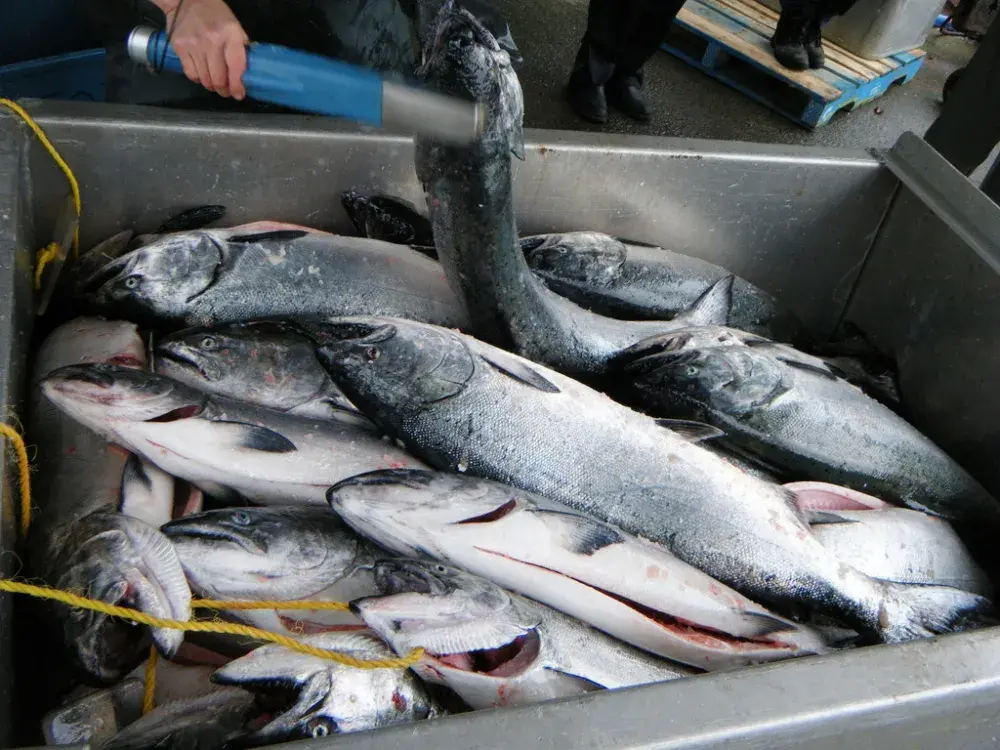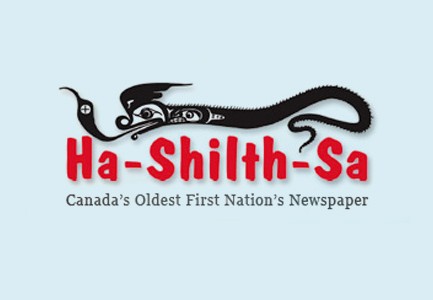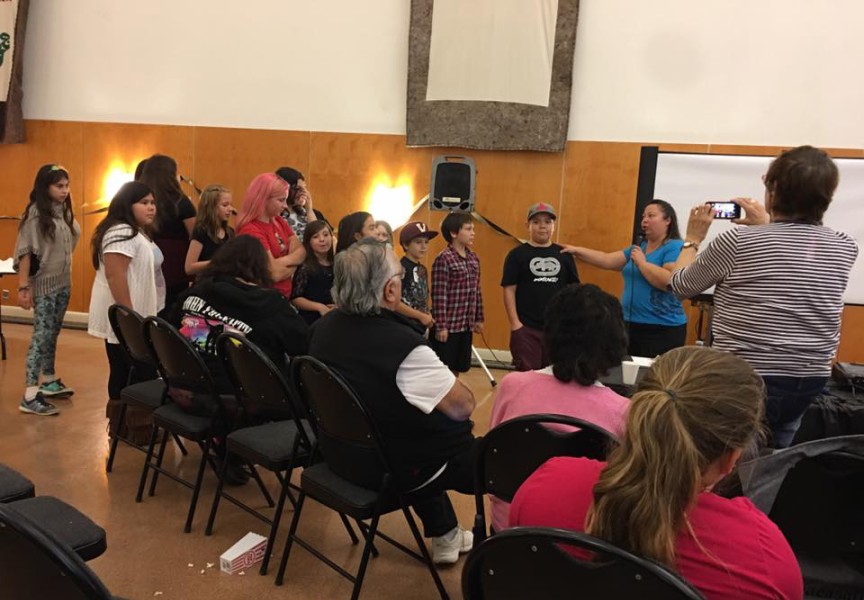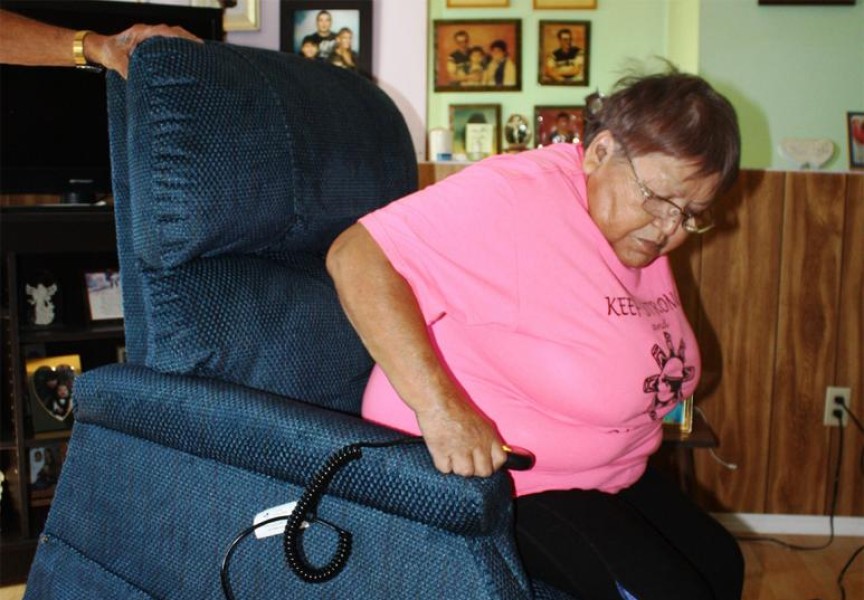Dr. Don Hall, manager of the Nuu-chah-nulth Tribal Council fisheries department, throws air quotes around the word “negotiations” when he talks about the implementation of the court victory on the Nuu-chah-nulth right to a commercial fishery.
He said it’s been two-and-a-half years of stalls and delays from the Department of Fisheries and Oceans (DFO).
Hall was reporting to the delegates at the Nuu-chah-nulth Tribal Council Annual General Meeting held Sept. 26 and 27 in Maht Mahs gym.
“Canada,” Hall said, “has no interest in settling this until it goes through the system.”
The case, in which five Nuu-chah-nulth Nations proved in BC Supreme Court that they had a right to a commercial fishery of any species, has made its way to the Supreme Court of Canada (SCC). That court sent it back to the Court of Appeals for a second look in light of another ruling known as Lax Kw’alaams.
The SCC set out the legal test a judge must apply in determining whether a First Nation has an aboriginal right to sell the fish they catch. The court also set out the method of analysis judges must follow in determining such cases. A hearing is scheduled for the Nuu-chah-nulth case from Feb. 12 to 15, 2013.
The T’aaq-wiihak fisheries, made up of representation from the five nations—Ahousaht, Ehattesaht, Hesquiaht, Mowachaht/Muchalaht and Tla-o-qui-aht— has been attempting to work with DFO on establishing a rights-based fishing plan to give force to the Nuu-chah-nulth win. T’aaq-wiihak means ‘With the permission of the Ha’wiih’. In her November 2009 BC Supreme Court decision, Justice Nicole Garson gave the parties two years to come to an agreement. That timeframe was extended by another six months by the Court of Appeal.
But there has been extreme frustration around those negotiations, said Hall.
“They have the ability to do more than they are doing,” he said, “but they are choosing to minimize, constrain and restrain” implementation.
Further, Ahousaht’s Kiista Keith Atleo told the delegates that many of the promises that DFO did manage to make were not lived up to this summer during the limited chinook fishery of 5,500 pieces that T’aaq-wiihak fisheries did negotiate this season. DFO was to help with boats, gear, and buying stations, and none of that happened this year, he said.
Ahousaht’s Curtis Dick said DFO was zealous of their monitoring of the small chinook fishery.
“Our guys are monitored like they are criminals in our own land,” he said. Kiista said there were four to six DFO officers watching First Nations boats unload.
Many of the speakers held up Tseshaht First Nation as an example of having a successful fishery, but were reminded that the achievements that Tseshaht enjoyed this summer did not come about overnight. Tseshaht, which was part of the Nuu-chah-nulth litigation for years, was removed to a second phase because of unresolved boundary issues.
Tseshaht Chief Councillor Hugh Braker said that it was a very good year for the fishery with between three and four million dollars going to Tseshaht fishers.
“It’s brought a lot of my people out of poverty,” he said.
In the 1980s, the Tseshaht membership said that its fishery had to be grounded in the culture, so the Tseshaht nation began a fisheries plan that was based in their own beliefs.
There are two fisheries: A gillnet and a community fish, said Braker. Each Friday’s catch goes to the elders, disabled and widows.
“We don’t care what DFO says. That’s our rules.”
And the Tseshaht were told by the elders that they can’t fish the last fish.
Why did they have a big fishery this year? Because they pulled their nets from the river in previous years for conservation purposes, said Braker.
“That was our rules, our beliefs and our culture.”
In the mid-80s, another requirement was that the fishery would be for everybody, and not just for those who could afford boats and gear. That’s why each Saturday and Sunday Tseshaht has a community drag seine. Gillnetters are asked to remove their nets from the waters to allow the fish through to Paper Mill Dam Park for the community fish.
“I’m proud of my nation,” said Braker. There were a lot of single mothers that benefitted over the summer from the fishery, he added.
In the beginning, however, the Tseshaht fishery was under siege by DFO, with hundreds of charges laid against their members over four years. The fishers, however, were willing to go to jail for what they believed was their right on the Somass River.
“It has not always been a smooth journey,” said Braker “and it has been a rocky road.” But he said Tseshaht was not willing to walk away from the river just because DFO wanted it to be so.
Hall said he appreciated the reminder of all that Tseshaht went through to achieve the fishery they have today.
“It wasn’t overnight. It was 30 or 40 years,” Hall said.
He told the delegates that there would be further discussion on the fishing negotiations and a strategy going forward at the Council of Ha’wiih meeting to be held at the Hupacasath House of Gathering on Oct. 31 to Nov. 2.







